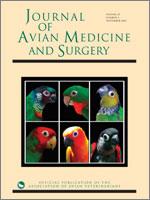To be considered for release, raptors undergoing rehabilitation must have recovered from their initial injury in addition to being clinically healthy. For that purpose, a good understanding of reference hematologic values is important in determining release criteria for raptors in a rehabilitation setting. In this study, retrospective data were tabulated from clinically normal birds within 10 days of release from a rehabilitation facility. Hematologic values were compiled from 71 red-tailed hawks (Buteo jamaicensis), 54 Eastern screech owls (Megascops asio), 31 Cooper's hawks (Accipiter cooperii), 30 great-horned owls (Bubo virginianus), 28 barred owls (Strix varia), 16 bald eagles (Haliaeetus leucocephalus), and 12 broad-winged hawks (Buteo platypterus). Parameters collected included a white blood cell count and differential, hematocrit, and total protein concentration. Comparisons were made among species and among previously published reports of reference hematologic values in free-ranging birds or permanently captive birds. This is the first published report of reference values for Eastern screech owls, barred owls, and broad-winged hawks; and the first prerelease reference values for all species undergoing rehabilitation. These data can be used as a reference when developing release criteria for rehabilitated raptors.
How to translate text using browser tools
1 September 2011
Hematologic Parameters in Raptor Species in a Rehabilitation Setting Before Release
Peter A. Black,
David L. McRuer,
Leigh-Ann Horne
ACCESS THE FULL ARTICLE
Avian
Bald Eagle
Barred Owl
broad-winged hawk
Cooper's Hawk
Eastern Screech Owl
great-horned owl





